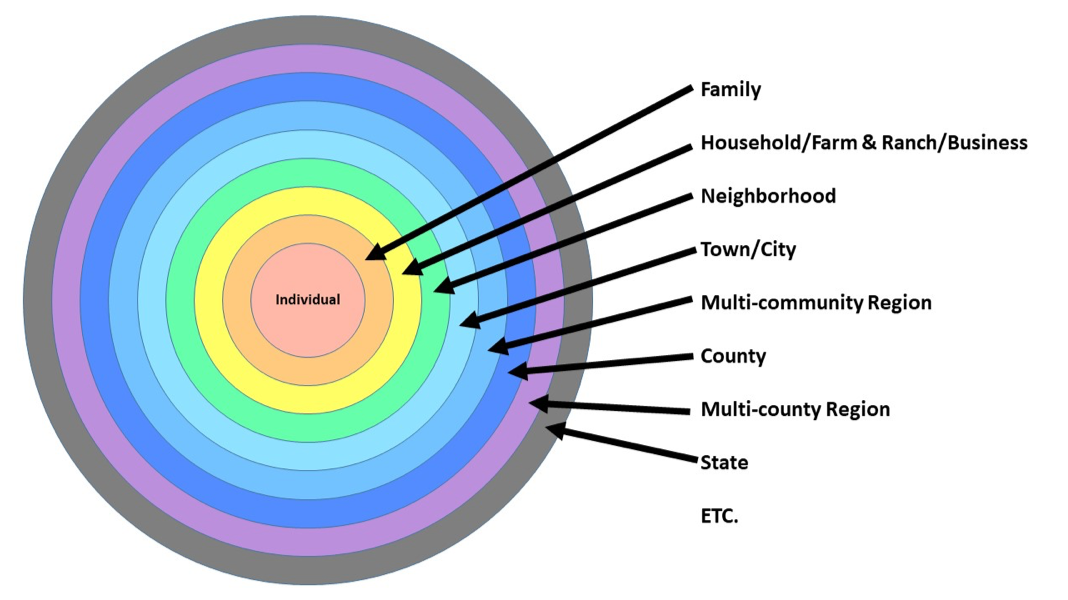
As Nebraska moves forward with long-term recovery from the devastating floods of March, it’s important to think about how Extension can help connect these efforts connect across scales.
Long-term recovery efforts rightly focus on assisting individuals, families, businesses, and parts of communities impacted by floods. When dealing with widespread disasters, it’s also important to recognize the cumulative effects of impacts across different levels of society that aren’t often discussed in these responses.
Think of a big target with the individual at the center.
Impacts to the center – lost wages, lost possessions, lost homes, inability to shop locally, etc. - affect the remaining levels in some way, shape, or form due to the multiplier effect. Impacts can also flow in the other direction – decisions made and policies implemented at a higher level can delay (or in some cases prevent) action and activity in lower levels.
Perhaps more importantly from a community and economic development perspective, disasters can disconnect one level from another, which in turn can lead to other long-term problems for local social networks and economies.
Thus, long-term recovery becomes more than just helping those who are affected by flooding – it becomes about reconnecting the economies and social infrastructure across all levels within the state.
How can Extension help?
Build awareness! As your community starts to rebuild, help local leaders and community members think about how they are connected to other parts of the community, county, region, state, etc. and work with them to reconnect those pieces back together.
The impacts may not always be within the community. Some towns did not experience flooding but the area around them did. These outlying areas form critical components of the town’s social and economic landscape. As infrastructure is rebuilt, communities should also work to rebuild the connection to their surrounding population and get them back on their feet as well.
There are impacts happening within levels too, especially at higher levels of aggregation (with lots of smaller parts). Think about how you can utilize Extension and University resources to address those as well. These may have nothing to do with disasters but everything to do with basic social engagement.
Look for opportunities to connect and reconnect. As was mentioned early on in the flood response process, fairs are an opportune time to connect people back to each other. Community events and celebrations are also excellent opportunities to reinforce communication, tolerance, collective action, and celebrate the relationships that exist within place. Even if recovery is still ongoing, supporting these collective actions can help bolster recovery efforts and community, county, regional, and state health in the long term.
By helping to connect relief and recovery efforts across different levels, we can help expedite the good work being done while at the same time ensure sustainable redevelopment across the state.
If you have questions about how you can help, please reach out to Jason Weigle, Kurt Mantonya, or a CVI educator near you.